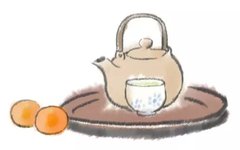External Pathogens

Recently, the temperature has fluctuated, and many people around me have caught colds. When the weather turns cold, the most common issue is the invasion of external pathogens (wàigǎn) such as wind-cold. If one is not careful, these pathogens can easily enter the body.
When a cold wind blows, it won’t be long before the symphony of sneezing, runny nose, and tears begins…
The process of catching a cold is essentially the body’s surface (jībiǎo) feeling the invasion of external evil qi (xiéqì), while our own righteous qi (zhèngqì) is insufficient to resist these external pathogens. The evil qi occupies the body’s natural barrier— the surface, and subsequently invades the five organs (wǔzàng), leading to a disruption of our inherent balance.
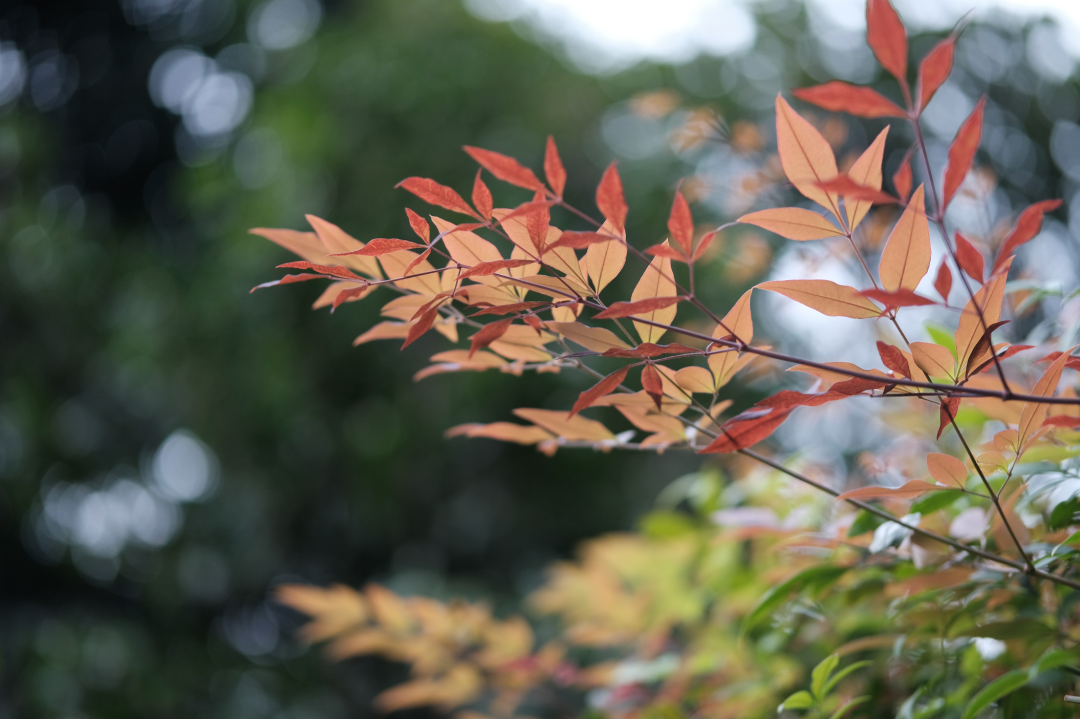
For colds, many people, especially mothers, surely have their own “dietary remedies”. Naturally, it is better to drive away external pathogens using food rather than medication.
Today, I will share several common dietary approaches and methods for dealing with external pathogens.
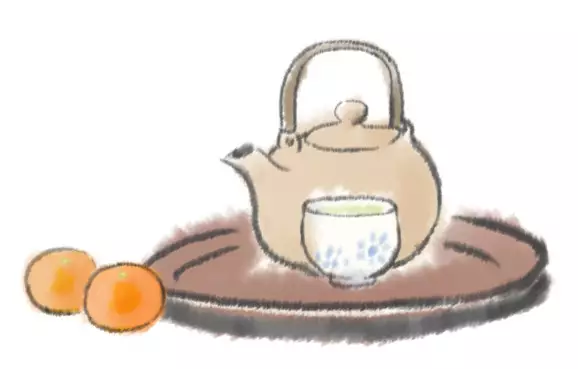
01 Wu Hu Soup (五虎汤)
First, I would like to share the “Wu Hu Soup” from the renowned TCM practitioner Li Ke. This recipe centers around walnuts (hé táo) and ginger (shēng jiāng). Many TCM practitioners have experience using walnuts to treat external pathogens, as walnuts nourish the kidneys (shèn) and eliminate external evil. Ginger warms the yang (yáng) and disperses cold, promoting sweating. Coupled with jujubes (dà zǎo) to harmonize the spleen and stomach (pí wèi), and scallions (cōng bái) to disperse cold, along with black beans (hēi dòu) to nourish the kidneys and reduce internal heat, this soup is very effective in the early stages of wind-cold colds.
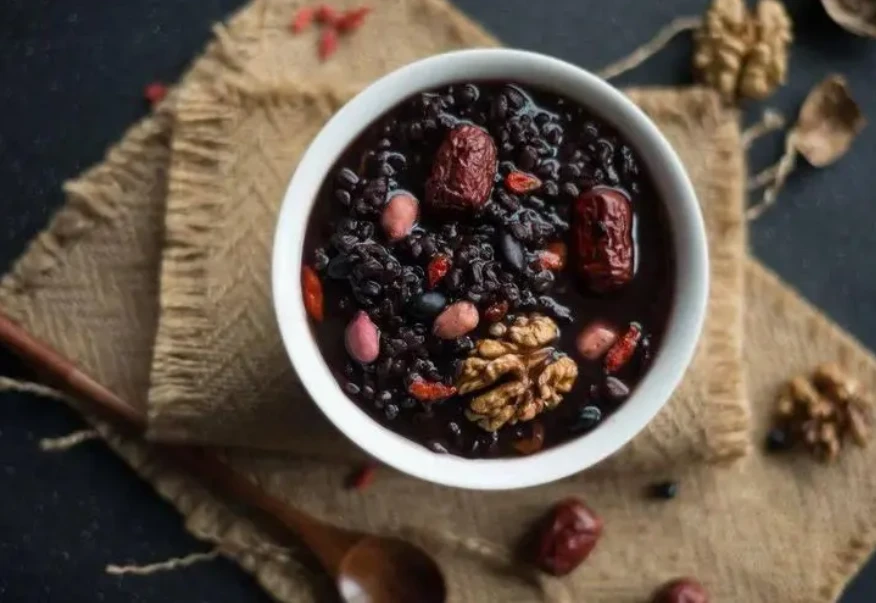
Ingredients:
6 walnuts (for smaller ones, use 10-12, crushed with shells);
45 grams of ginger (or about 8 slices);
10-12 jujubes (broken open, no need to remove pits);
1-2 scallions (use the white part, trimmed and cut into sections);
30 grams of black beans;
Preparation:
Add about 1000ml of water, simmer for 45-60 minutes, and consume in multiple doses, or divide into three doses for morning, noon, and evening.
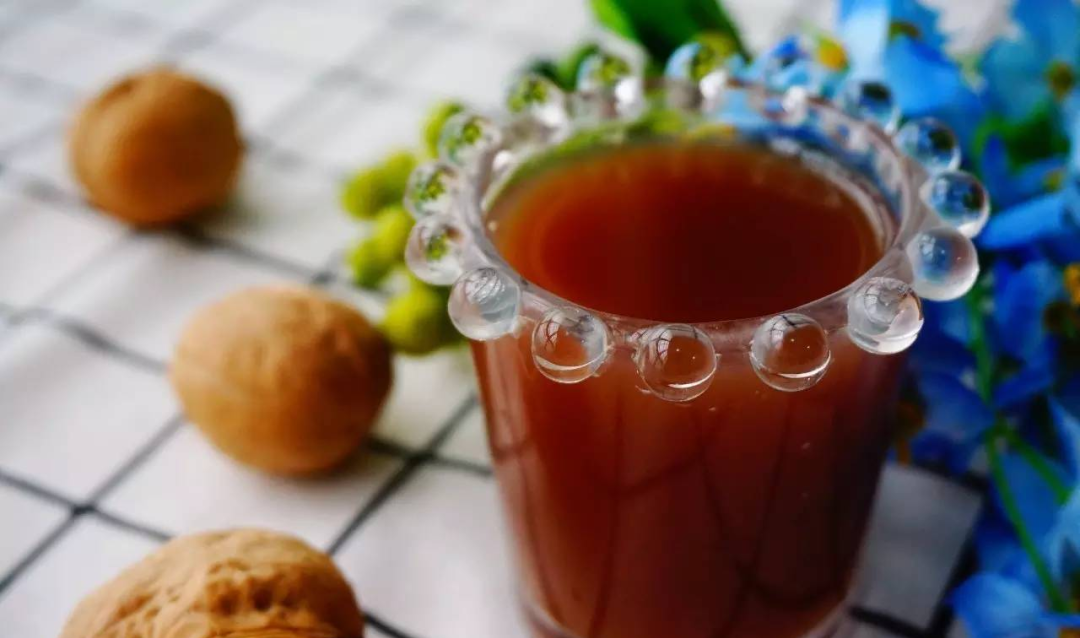
There is another version of Wu Hu Soup from TCM practitioner Zhang Baoxun:
Ingredients: 5 grams of sesame (preferably raw black sesame), 9 green beans, 2 grams of green tea, 2 walnuts, and 3 slices of ginger.
Preparation: Wash the above ingredients and place them in a pot with water to boil. Once boiling, cook for about 3 minutes and then turn off the heat.
This soup can be consumed at the onset of flu or for flu prevention.

02 Scallion and Fermented Soybean Soup (葱豉汤)
The recipe for Scallion and Fermented Soybean Soup comes from the “Zhou Hou Bei Ji Fang”.
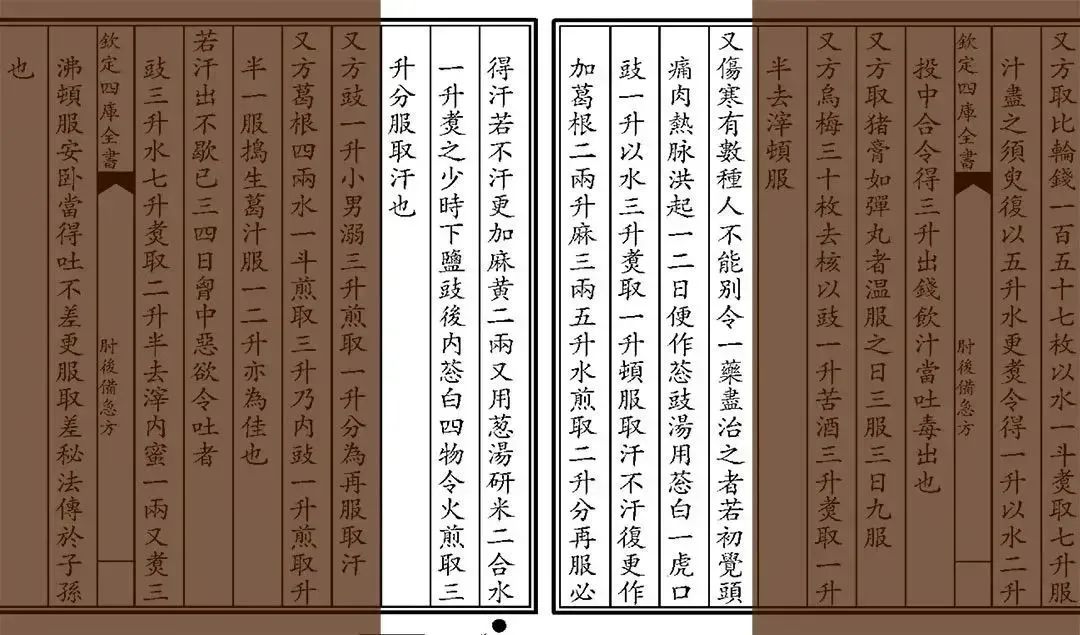
The text states: “There are several types of cold damage, and one cannot differentiate them. If one medicine can treat them all, if one feels a headache, body heat, and a rapid pulse for one or two days, then one should make Scallion and Fermented Soybean Soup.”
In TCM, wind-cold colds are categorized into many types, which the average person may not be able to distinguish, but Scallion and Fermented Soybean Soup can be used to treat early-stage colds. If you notice a headache, elevated body temperature, and common cold symptoms in the first couple of days, you can use this soup to respond.
Additionally, at the onset of a cold, one often feels cold, but as the symptoms of cold diminish, if there is still fever with nasal congestion, body aches, and headaches, this soup can still be used.
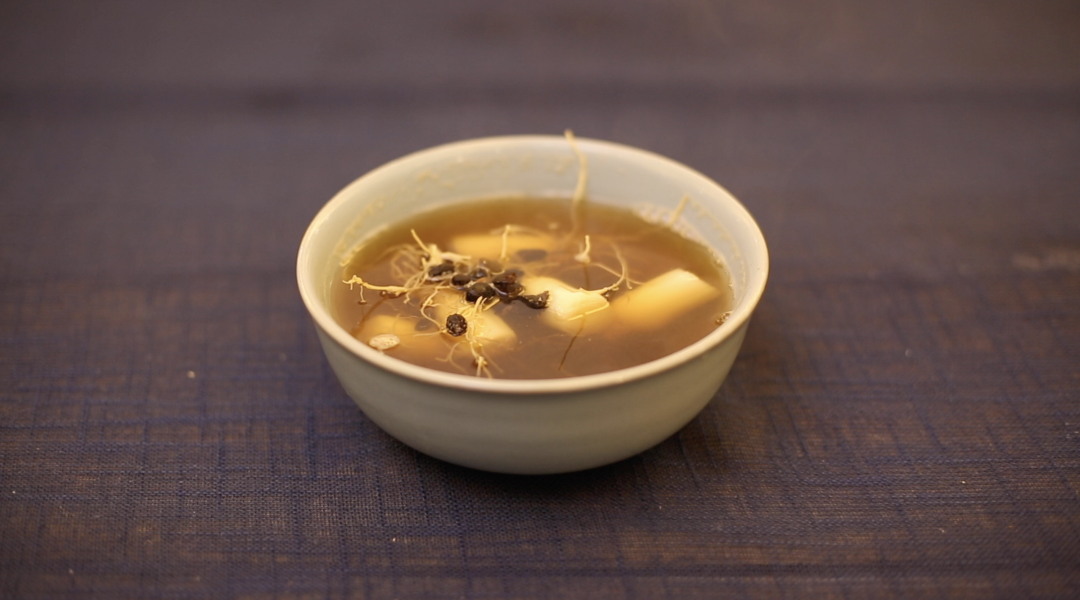
In summary, in the early stages of a wind-cold cold, this bowl of soup can resolve various discomforts.
Ingredients:
5 scallions, specifically the white part at the root, preferably large scallions; if not available, the white part of small scallions can also be used.
15-30 grams of fermented soybeans (dàn dòu chǐ), which is a medicinal ingredient from TCM shops, not the fermented soybeans used as a condiment in markets.
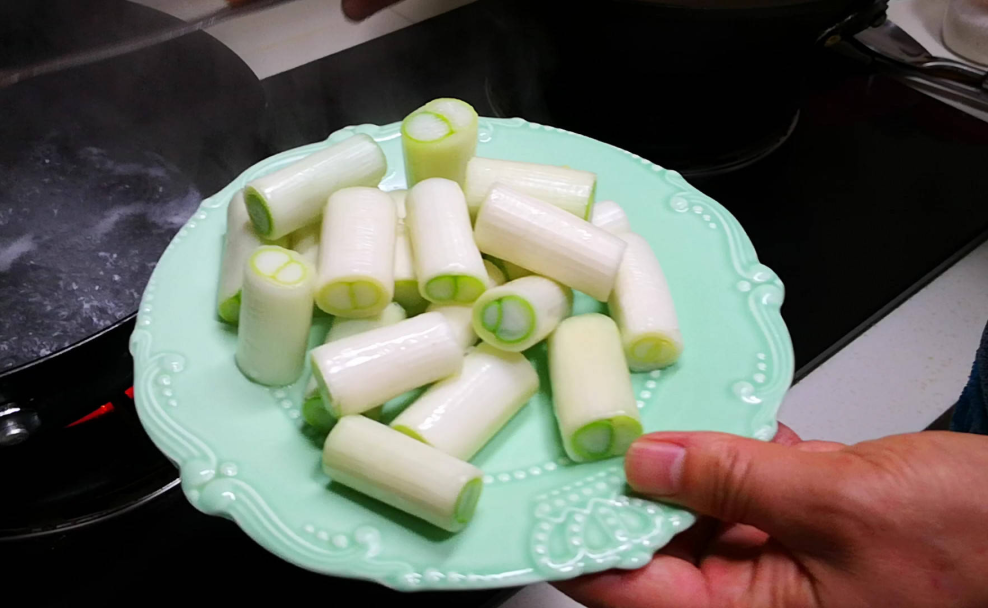
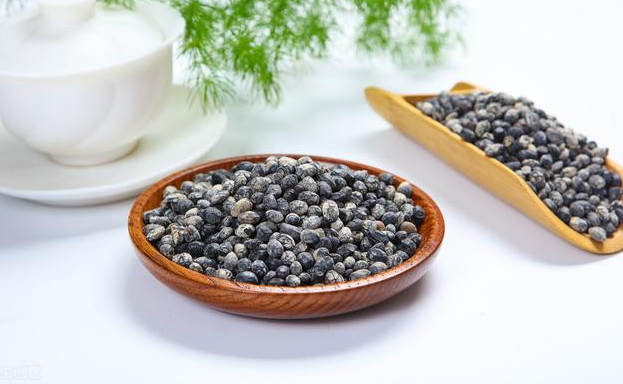
Preparation:
1. Add the fermented soybeans to water and boil over high heat, then reduce to low heat and simmer for 15 minutes.
2. Then add the scallions and simmer for another 5 minutes.
3. Strain and drink the broth.
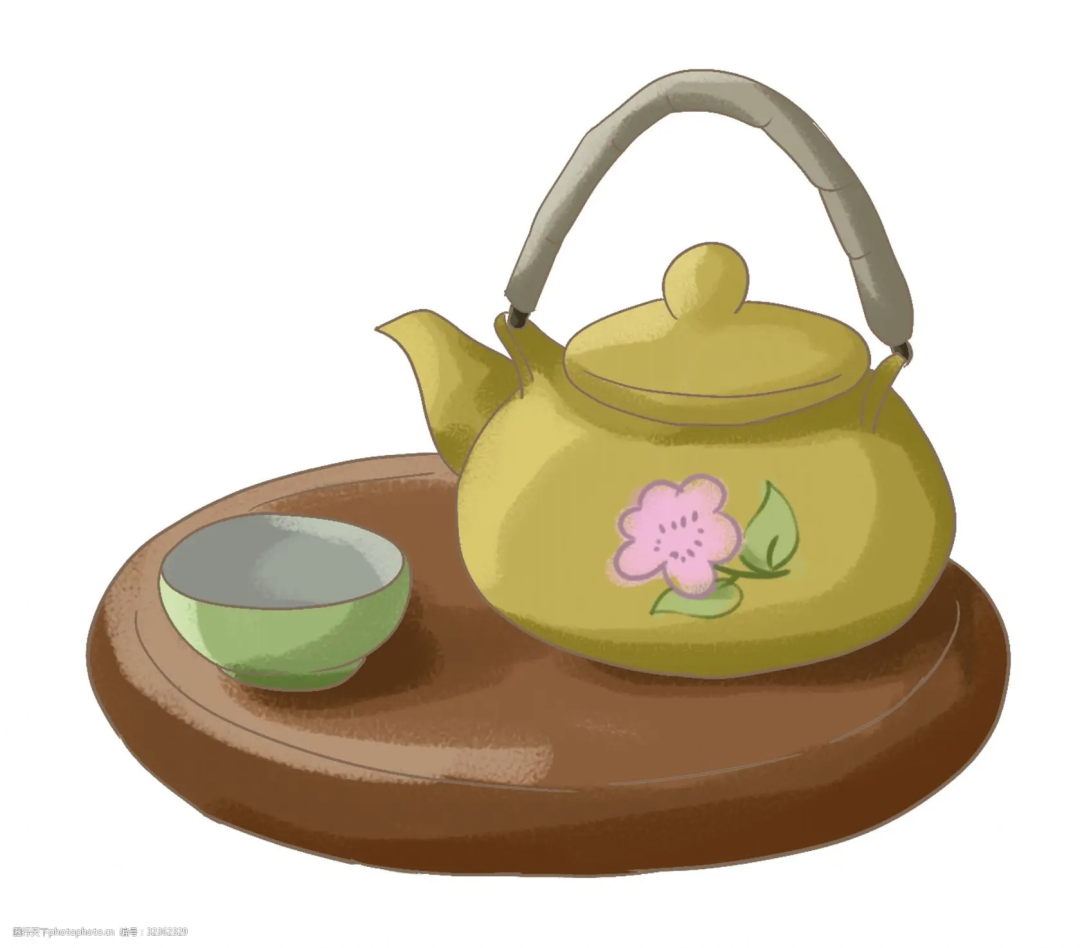
03 Sweet Potato and Mustard Greens Soup (番薯芥菜汤)
The famous TCM practitioner He Yanshen from Guangdong recorded that during flu outbreaks, he would use a recipe: a handful of mustard greens (jiè cài), one sweet potato (fān shǔ), chopped, with a few slices of ginger, boiled in water and consumed as tea.
Many people experience symptoms like dry throat and pain after catching a cold, and this soup can help clear heat.
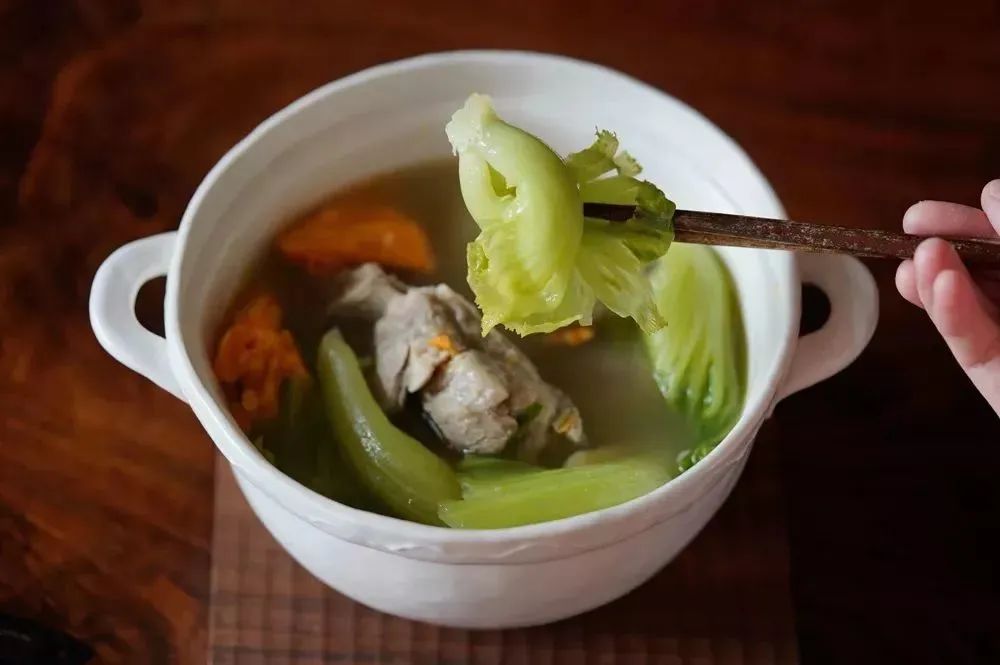
Mustard greens are neutral to slightly cool in nature, pungent, and help to promote lung qi (fèi qì); sweet potatoes are sweet and help to moisten the intestines and harmonize the stomach; ginger raises yang qi and warms the stomach. Together, they clear internal heat and promote qi circulation.
Ingredients:
Prepare a handful of mustard greens, one sweet potato, and two slices of ginger.
If you prefer a meat broth, you can add two or three pieces of meat bones.
Preparation:
In a frying pan, sauté the ginger slices until fragrant, then add the sweet potato and mustard greens, stir-fry for a few moments. Add enough water to cover the ingredients halfway, bring to a boil, and cook for six to seven minutes. Season with salt to taste.
For meat broth, blanch the pork bones in water for 40 minutes, then cook with the other ingredients for an additional 6-7 minutes.
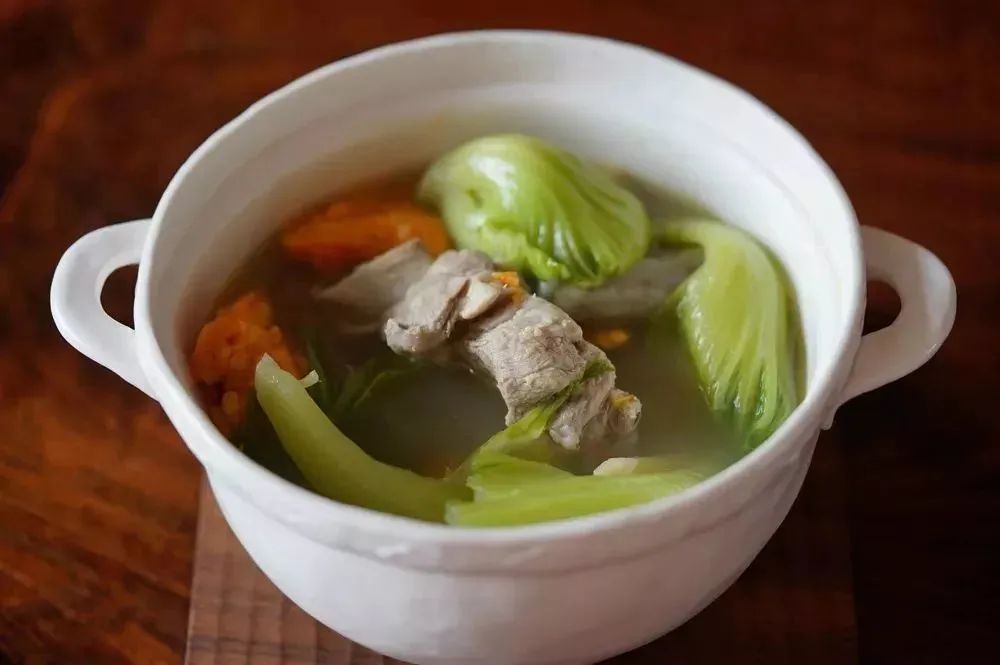
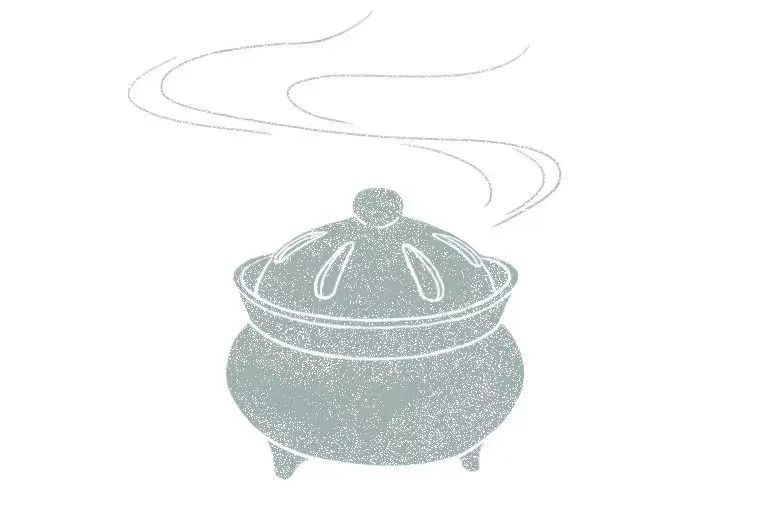
04 Qing Dynasty Famous Recipe “Immortal Porridge” (神仙粥)
This is an ancient remedy from the Qing Dynasty for treating colds, validated by many renowned TCM practitioners for its effectiveness and safety.
According to Wu Yifeng’s “Deng Qian Cong Lu”, Immortal Porridge is specifically for treating all cold symptoms. For those who have been ill for two or three days, consuming it will provide relief.
This porridge can be used as a safe dietary remedy during the onset of headaches and fever from a cold, suitable for the elderly and those with deficiencies.
For patients with mild early symptoms, whether wind-cold or wind-heat, if no medicine is available, drinking it hot and then going to sleep to sweat it out is very effective.
Ingredients: 50 grams of glutinous rice (nuò mǐ), rinsed twice, 20 milliliters of vinegar (shípǐn), 7 slices of ginger, and 7 chopped scallions. If glutinous rice is unavailable, it can be substituted with regular rice.
Preparation: Rinse the glutinous rice, add an appropriate amount of water to cook into a thin porridge. Then add the scallions and ginger, cooking for 5 minutes, followed by adding a small bowl of vinegar, stirring well before serving.
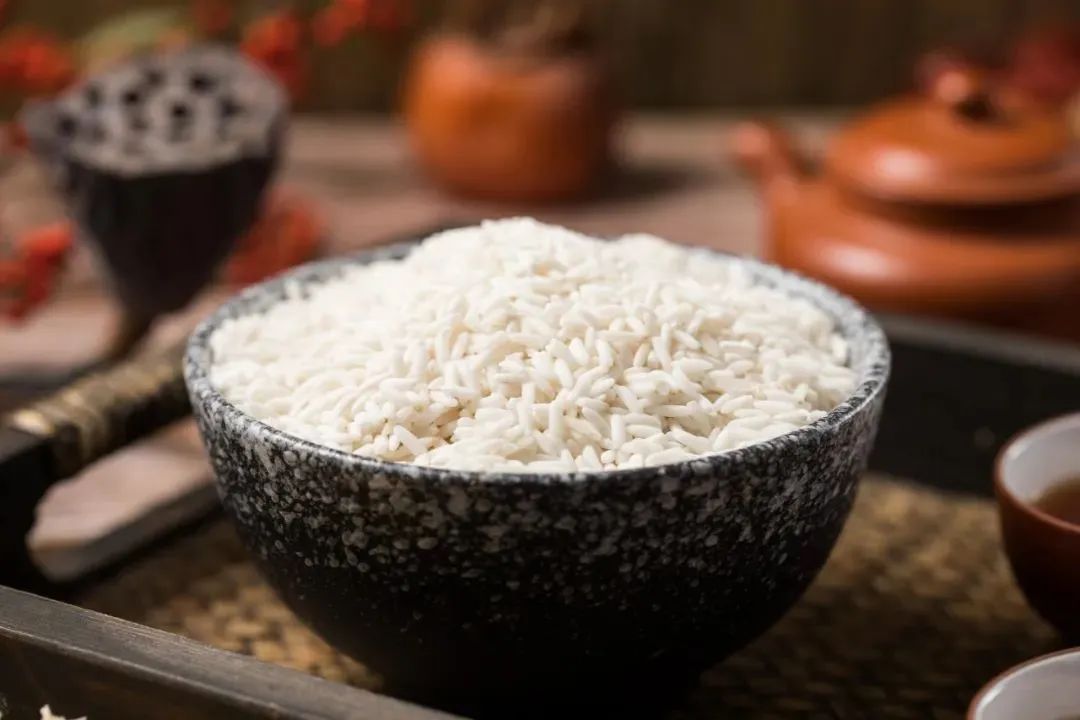
After cooking, glutinous rice can warm the body and is more nourishing than regular rice; scallions and ginger are both warming and can work together to expel wind-cold; adding a small amount of vinegar warms the stomach and harmonizes, slightly constricting to prevent excessive dispersal.
The wisdom of TCM lies in using ordinary food to create many diagnostic approaches to combat external pathogens. A few unassuming ingredients can be combined to form effective dietary remedies.
Learning more approaches and methods to deal with pathogens can better protect the health of oneself and one’s family.
– end –

Scan or click “Read the Original” to order ginger syrup, premium Xiang lotus seeds, and nine-year-old Lanzhou lily. For more information, please add WeChat 18638505178


